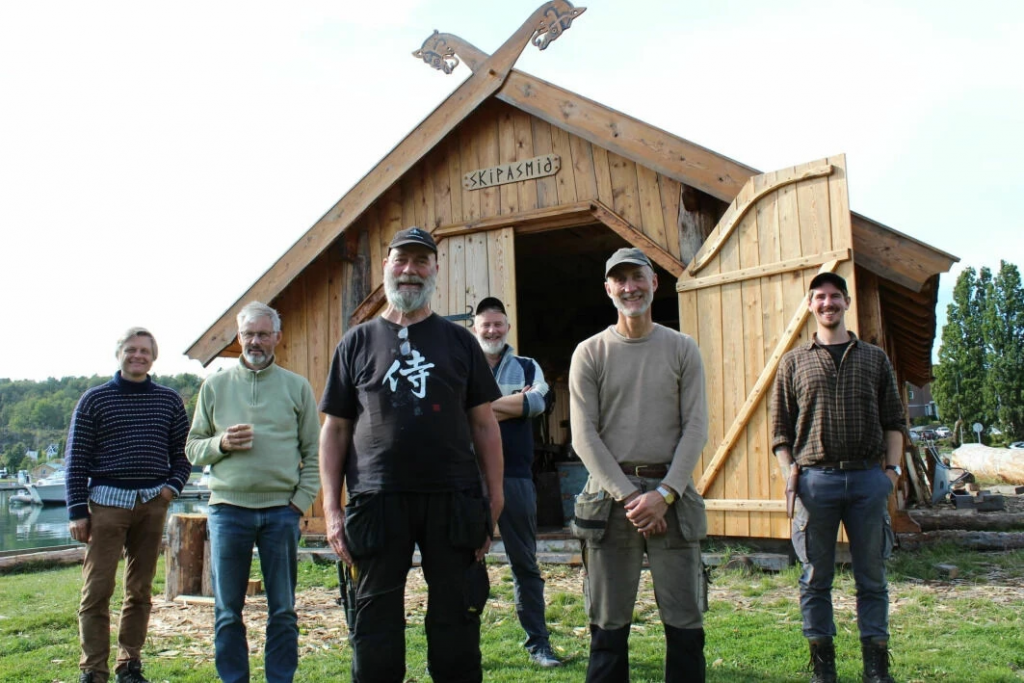
These woodworkers are joined by researchers on their third Viking ship project
The prow of a Viking ship rises over Vikingodden in Tønsberg, Norway. The ‘Gokstad ship’ is being rebuilt.

Anders Moen Kaste
JOURNALIST
“It’s behaving a little differently here — it’s springing up again!”
The log the woodworkers want to split is giving department manager Tore Forsberg headaches, while also causing him and his colleagues to burn a few extra calories. The axe doesn’t slice through the log like it usually does.
The sounds of loud male voices and axe blows drown out the electric cars whizzing past the city centre. A small piece of the Middle Ages has found its place here in Sandefjord, southwest of Oslo, on Norway’s southern coast.
Oak logs as big as cars lie waiting to be split into ship planks. Thin oak shavings are spread like a carpet over the entire area, which is scented with the aroma of wood combined with the smell of the sea.
Over the course of four years, these logs will become part of the finished copy of the ‘Gokstad ship’, which is being built by the Oseberg Viking Heritage Foundation. The ‘Gokstad ship’ was excavated in 1880, and is the world’s largest preserved Viking ship.
The materials are being crafted in the middle of Sandefjord, while in the neighbouring town of Tønsberg they are fine-tuned and assembled into a finished ship.
Curious people come and go — both Sandefjord residents and tourists. Many follow the process from week to week. It’s a process that continues both in summer and winter and that everyone is welcome to take part in.
Perhaps the difficult log that is on the programme today is challenging to deal with because of very early stage rot, says Svein Solberg. He is a senior researcher at NIBIO, the Norwegian Institute of Bioeconomy Research.

